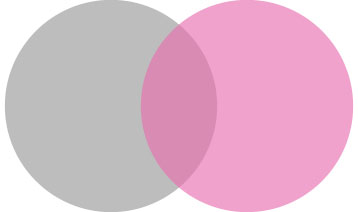
To frame or not to frame…
What’s in a frame? We’re seeing a lot of clients choosing to incorporate art in their spaces and we often get questions about the best way to display paintings, photographs, and prints. We love that more and more people want to include original works in their decor– no matter if it’s a drawing by your child when they were in 3rd grade or a Group of 7 masterpiece, art is a great way to showcase personality and taste.
We previously wrote a bit on how to group art works for display in the home (read here!), but we didn’t touch on framing. Adding the right frame on a painting, photo, or print can really elevate the piece and integrate it into your overall design scheme. With some help from our friends at the Ian Tan Gallery in Vancouver, we explored different framing options and why you should consider framing (or not!).
Frames can tie into your overall design:
This one is a two part-er…
1. You can use frames to connect to the overall scheme of the room by matching the tone of the millwork or accent materials with the frame. This way, regardless of what’s inside the frame, it will coordinate with the room.
2.If you have a large collection of art, you can create harmony by having similar or coordinating frames. As above, If there are a lot of works or if the works are a different style or medium, it’s a great way to present them as a coordinated group.
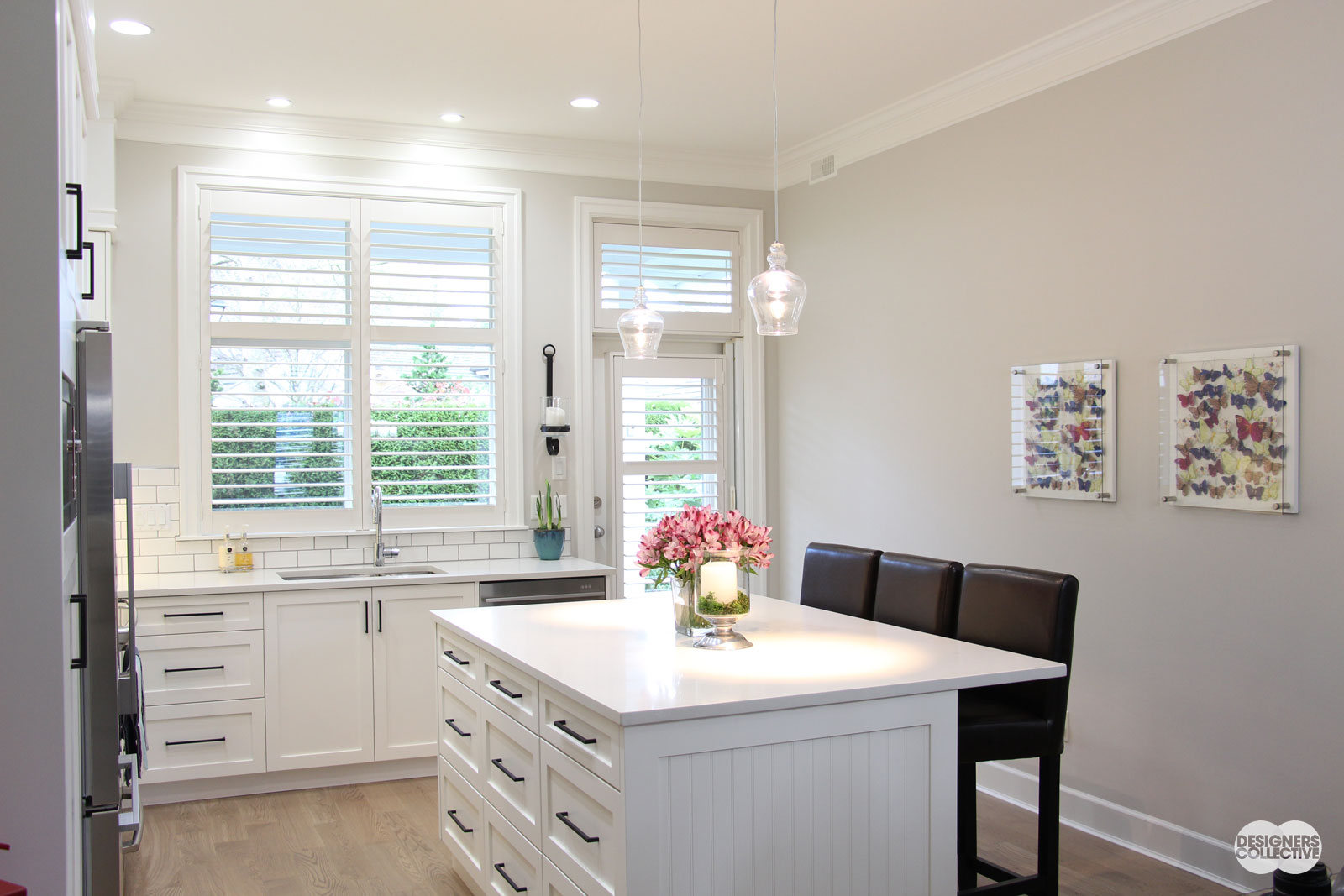
In this kitchen space (see the portfolio here!) the two butterfly works are framed in clear acrylic. It is light and airy, keeping with the theme of the space and resonates with the glass light fixtures and decor on the island.
Frames can freshen up a work:
Find a great piece at a garage sale? Inherit a work from family? With great luck the previous owner will share your taste… but that’s often not the case. An inherited heavy metallic frame might not quite fit a monochrome, minimalist space like a simple white or black frame would (but we’re also big fans of an eclectic mix!). Switching out a frame can really freshen up a work and change the impact of the piece. Don’t pass on that family heirloom yet!

Raphael’s portrait of Lorenzo de’Medici is framed in a beautiful ornate gold frame– not your style? Simply re-frame with something more your speed…
Frames can ‘finish’ a work:
Or not… this is really a personal preference. Having a painting, for example, hanging frame-less is a minimalist approach that can look great in the right space. Some artists will paint just on the front of the canvas and leave the edges ‘raw’. A frame can tidy up raw edges and make the work look more complete– but that’s totally up to your taste. Tip: think about how you will move around the work– are the edges even visible? How the artist finishes the edge of the canvas may also influence your choice to frame as shown by the images below:
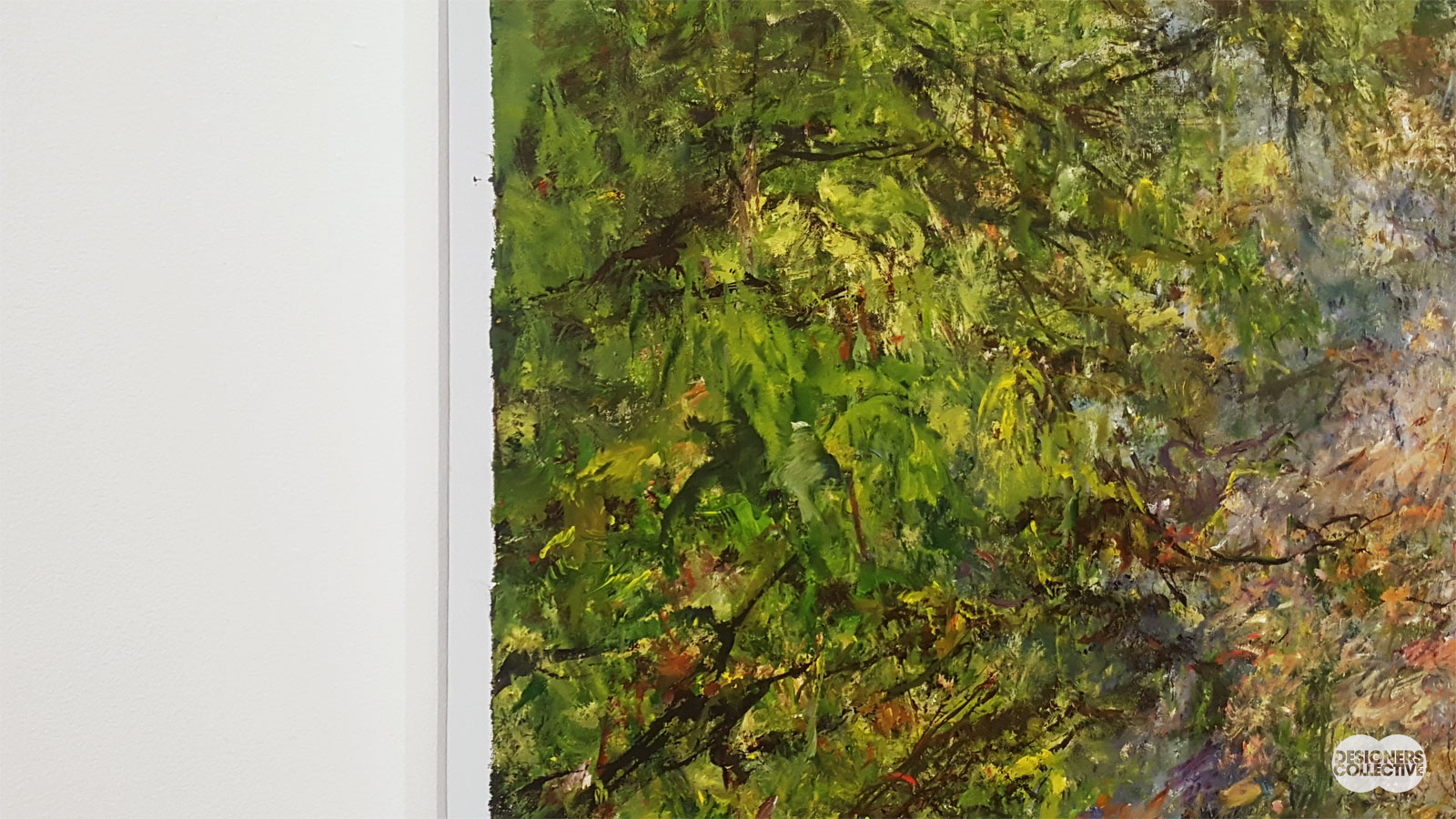
This gorgeous work by artist Judy Cheng called Pond (see more work here) has a raw edge. It’s personal preference if you want to showcase this or not.
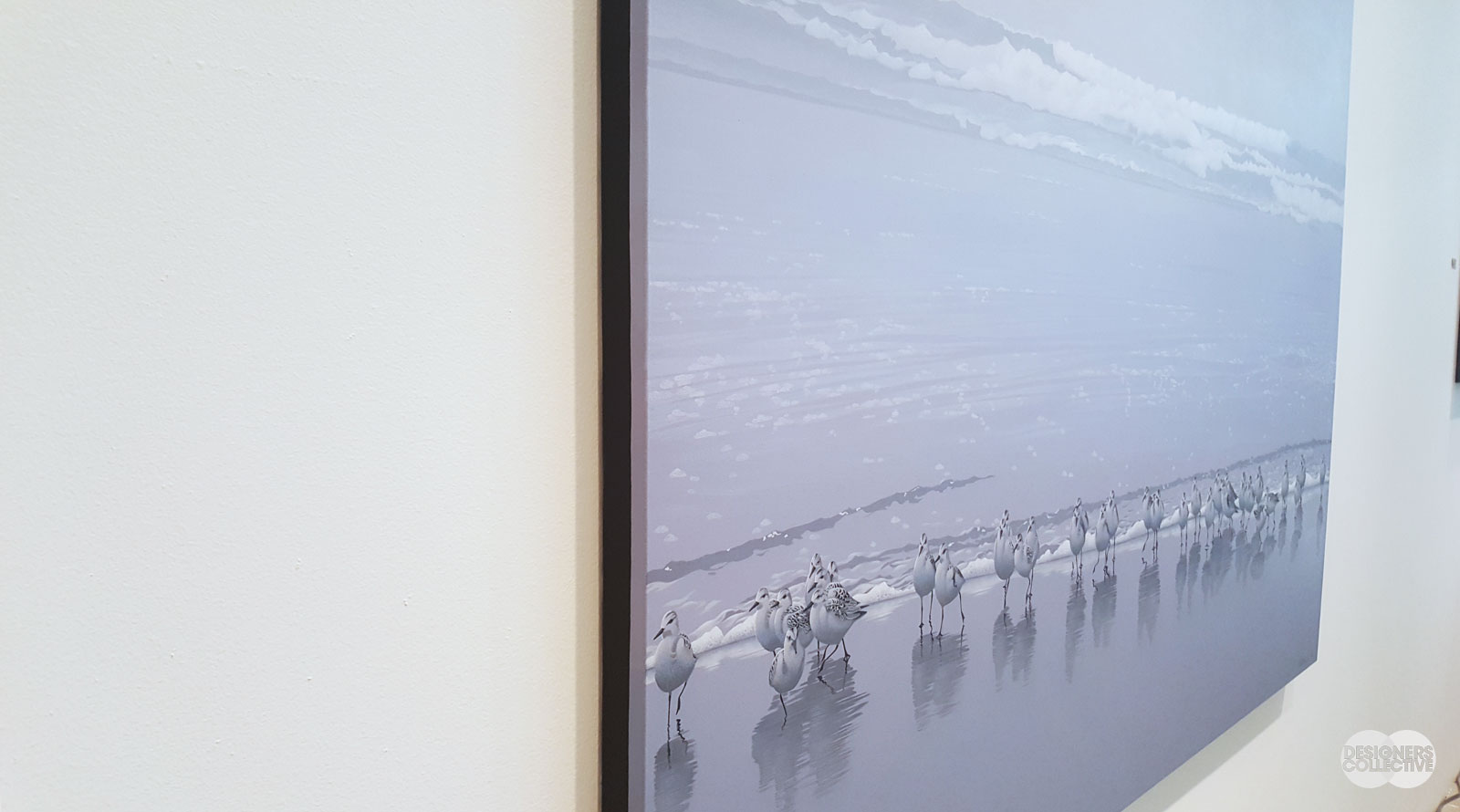
This work by Carol Haigh called Running from the Sea (see more work here) has a finished edge. Haigh has stretched the canvas so the painting continues over the front edge. The rest of the edge is painted black for a contemporary look.
Frames protect works:
If you’re investing in original art, purchasing a print, or even framing a concert poster, you want to make sure they won’t be damaged on display. Frames will protect the corners of works in high traffic areas or if they are near other objects (bumps can happen!). If you have a work on paper or in a delicate material (inks, watercolours, etc..), these are often much more susceptible to damage from light and moisture. Having a frame with gallery glass (minimal reflection and UV protection) will ensure the life of your delicate works will be extended.
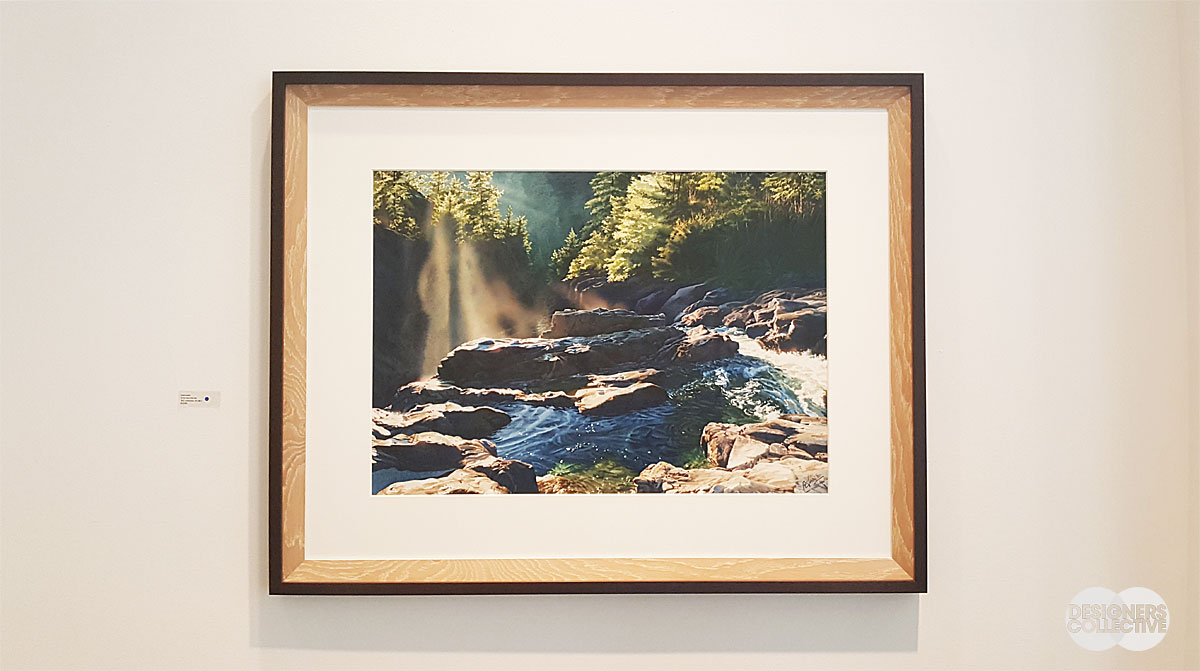
This is the work of Carol Evans (more work here), acclaimed Canadian watercolourist. Can you believe this is not a photograph? In addition to having a frame picked by Evans herself to coordinate with the watercolour, there is a layer of gallery glass within the frame.
What is the right frame to choose?
To help you with this decision you can work with designers (like us!), a commercial art gallery, or directly with a framer. We all have experience with framing art to make it look best in the space and highlight the characteristics of the work. Below we’ve used a beautiful original work by Kristina Boardman (see more of her work here) called Embody. See how the different frames bring out the different tones in the work.
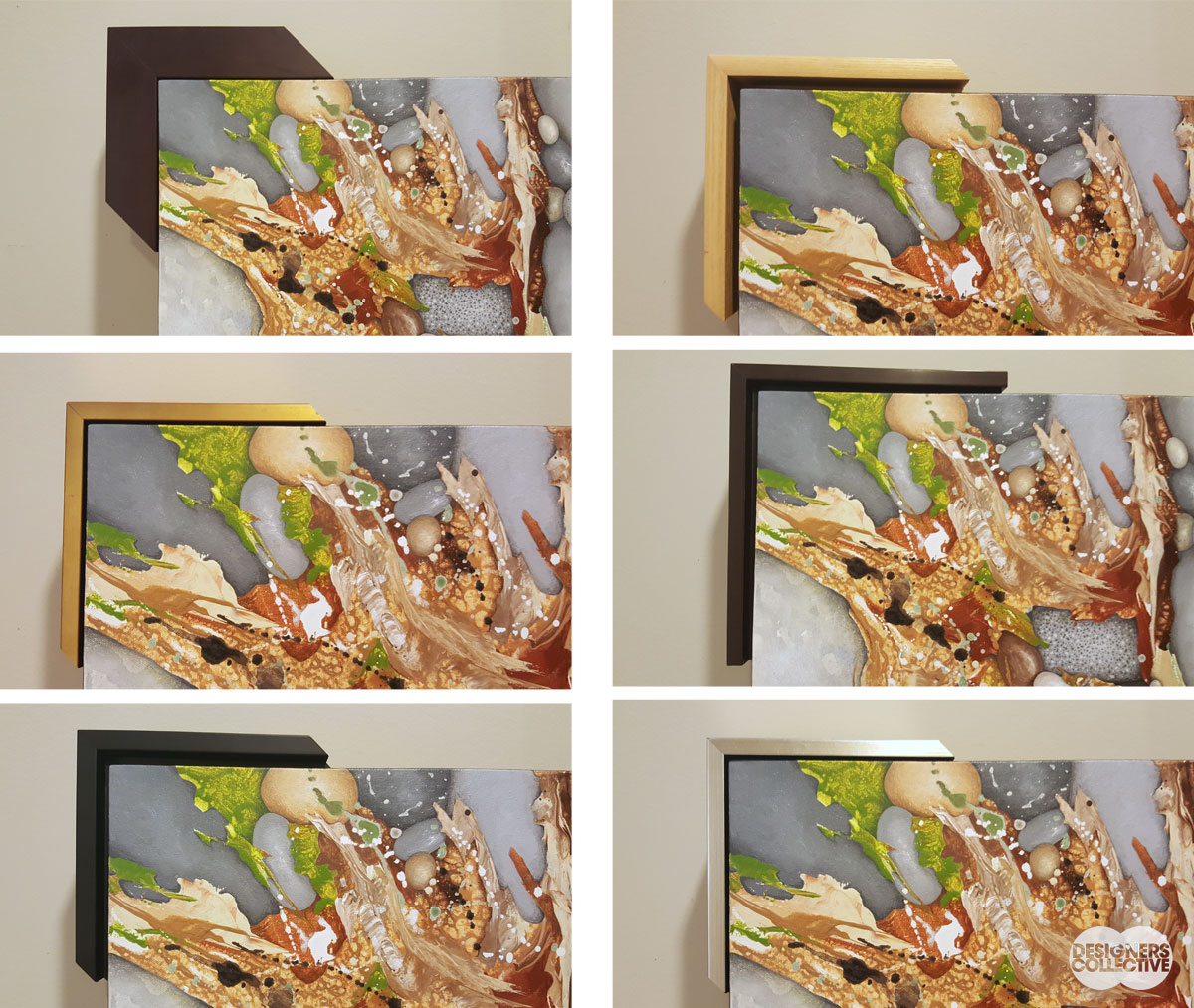
Different frames will accent different aspects of the work. Here, the darker frames bring out the dark browns and blacks in the work. The silver frame, bottom right, coordinates with the grey of the stones. The light wood, upper right, connects with the lighter brown tones. The larger frame, top left, has a slight red undertone and looks good with the warmer browns. Galleries and framers have lots to choose from!
The takeaway? Don’t be afraid of framing a work! Whether it’s a million-dollar work or something with more sentimental value, framing can tie in your favourite artworks with the overall design of the space and protect the works. If you have any questions about framing let us know!



